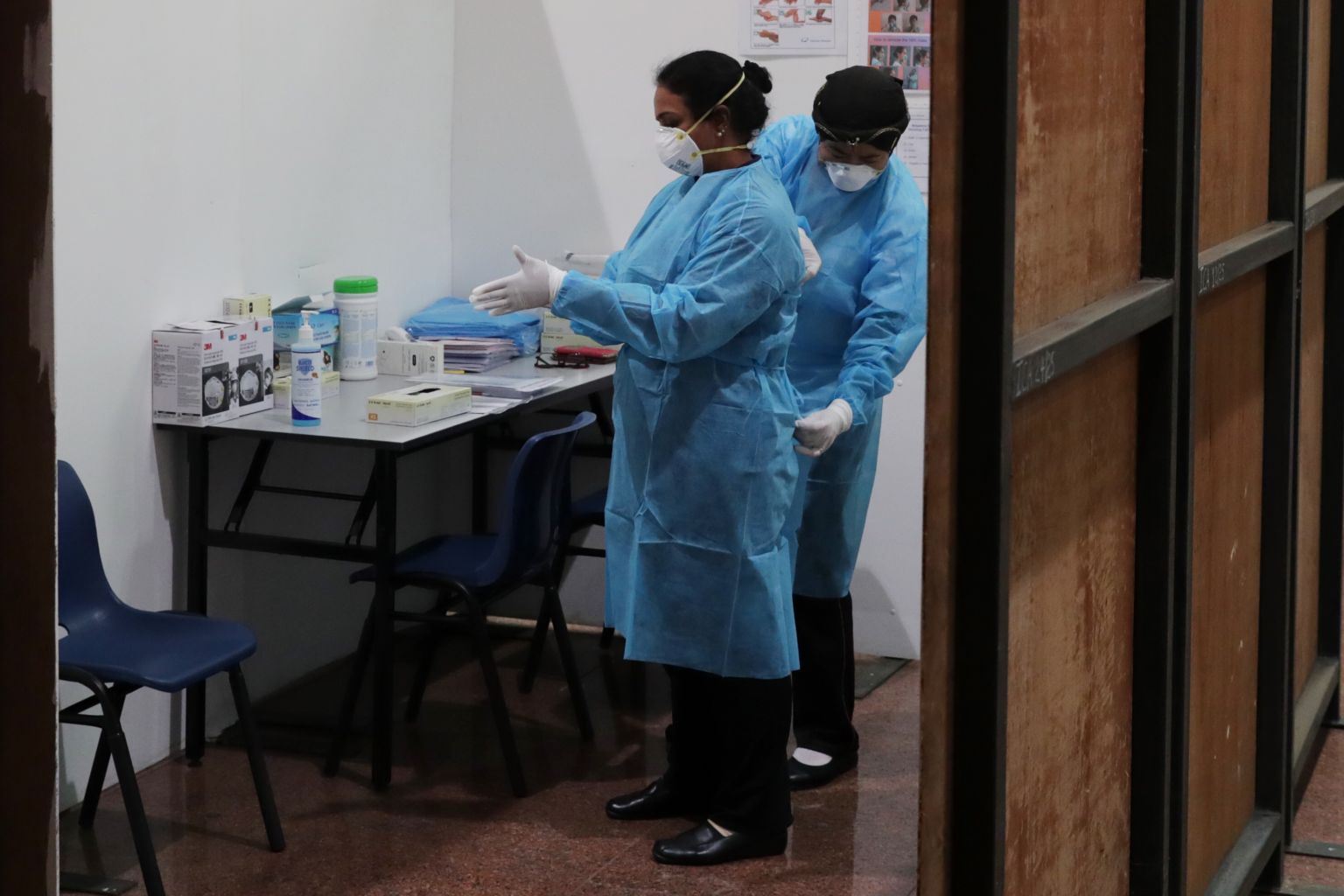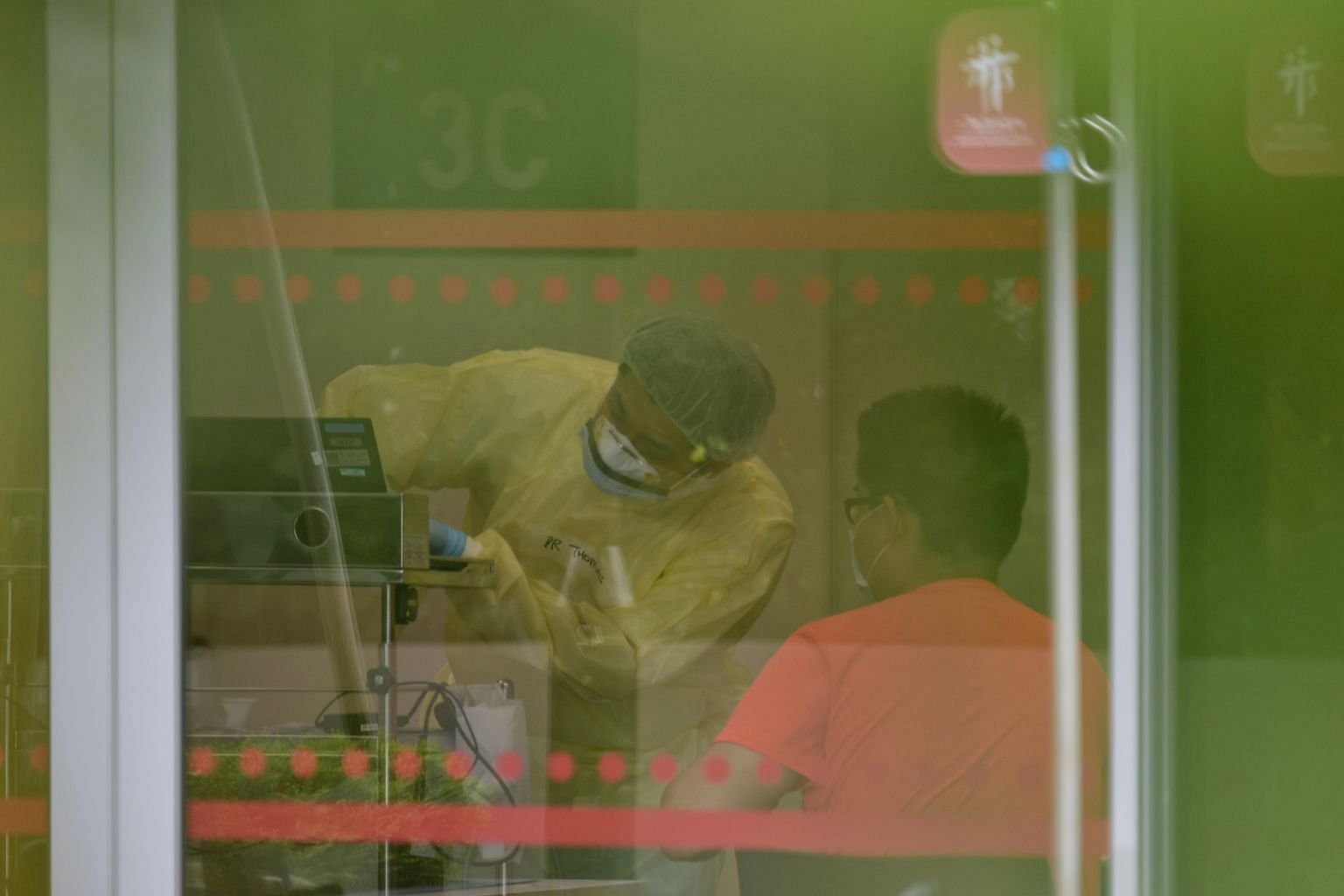Why healthcare workers are wearing protective gear
Sign up now: Get ST's newsletters delivered to your inbox

Healthcare workers at a temperature screening station at Tuas checkpoint, on Jan 24, 2020.
ST PHOTO: KELVIN CHNG
Follow topic:
There has been talk online in the past week of suspected Wuhan coronavirus cases in various malls, because healthcare workers were seen wearing personal protective gear, complete with long-sleeved gowns and gloves.
But people should not be unduly alarmed at the sight of these workers garbed in such personal protective equipment (PPE) while at work.
The equipment, which include items such as masks, gloves, gowns, caps and goggles, are a sign that every precaution is being taken in preventing the spread of the Wuhan virus in Singapore.
The Ministry of Health (MOH) said on its website that the PPE is needed to create a barrier between healthcare workers and the infectious agents from patients, and to reduce the risk of transmitting micro-organisms from healthcare workers to patients.
Dr Brenda Ang, chairman of the infection control committee at Tan Tock Seng Hospital, said in an interview at the National Centre for Infectious Diseases (NCID) on Friday that wearing the PPE is a reasonable thing to do for healthcare workers handling a suspected case.
This is because "they are in close contact, they are speaking to the patient... sometimes, they have to carry the patient."
The Wuhan coronavirus is believed to be spread mainly through respiratory droplets, she noted.
Generally, for diseases that are spread via droplets, transmission can occur when one is within 1m to 2m of the infected person who is coughing, sneezing or talking. Indirect contact transmission may also be possible, as the droplets can settle on a surface.
Indeed, since Jan 4, soon after news of the outbreak broke in December last year, the Singapore Civil Defence Force (SCDF) ambulance crew, including the drivers, have been donning the PPE when conveying suspected cases to the hospitals.
A spokesman said the SCDF's emergency ambulance medical crew wore the PPE when responding to cases where patients displayed fever or respiratory symptoms - for example, cough, wheezing or shortness of breath - and if they had travelled to China in the past 14 days.
Mall management staff also stock the PPE, as part of their precautionary measures because they would have to escort any suspected case to a holding area before the ambulance arrives.

A healthcare worker examining a person at the National Centre for Infectious Diseases at Tan Tock Seng Hospital, on Jan 30, 2020.
ST PHOTO: KUA CHEE SIONG
CapitaLand said in a statement last Wednesday that it has implemented precautionary measures in accordance with guidelines from the authorities.
Besides stepping up cleaning efforts, hand sanitisers are available for tenants, shoppers and guests at its properties in Singapore. There are also designated premises with predetermined routes within its properties for the isolation of suspected cases.
CapitaLand manages 20 operational malls, including Bugis Junction, Ion Orchard and Tampines Mall.
A spokesman for Frasers Property Retail, which owns and/or manages 14 malls such as Eastpoint Mall, Causeway Point and Waterway Point, said that since mid-January, precautionary measures that follow updated protocols for pandemics have been implemented in its malls.
"Staff have been briefed on the proper usage and disposal of personal protective equipment when facilitating the movement of any patient suspected to have the virus to the mall's ambulance pick-up point," he said.
"All suspected patients will be escorted through a designated route designed to minimise exposure of the patient to the public. Thereafter, the staff will thoroughly disinfect the affected areas and dispose of their gear in decontamination bins."
Dr John Cheng, head of primary care at Healthway Medical Group, said that aside from simply putting on PPE, appropriate training is necessary to ensure their proper use and disposal.
Staff at the group's clinics have been wearing surgical masks in anticipation of suspected cases.
However, "when examining a suspected case, our healthcare personnel will put on long-sleeved gowns, N95 masks and gloves due to the close contact and duration of exposure", said Dr Cheng.
Being in close contact puts them at higher risk of contracting the virus, he added.
"It is not necessary for members of the public to go to that extent, but rather look to practise good hygiene and other preventive measures such as avoiding crowded spaces, covering your nose and mouth when sneezing and putting on a surgical mask" when sick.

